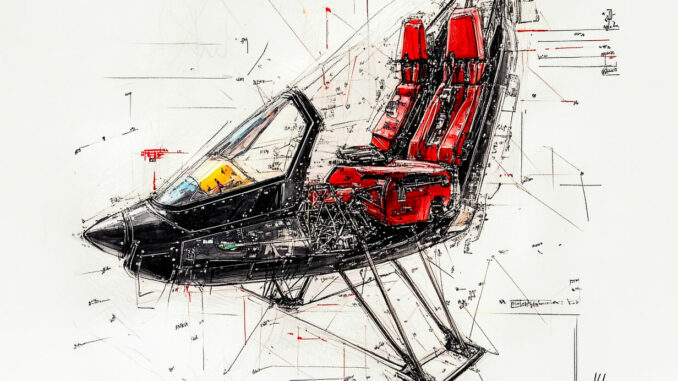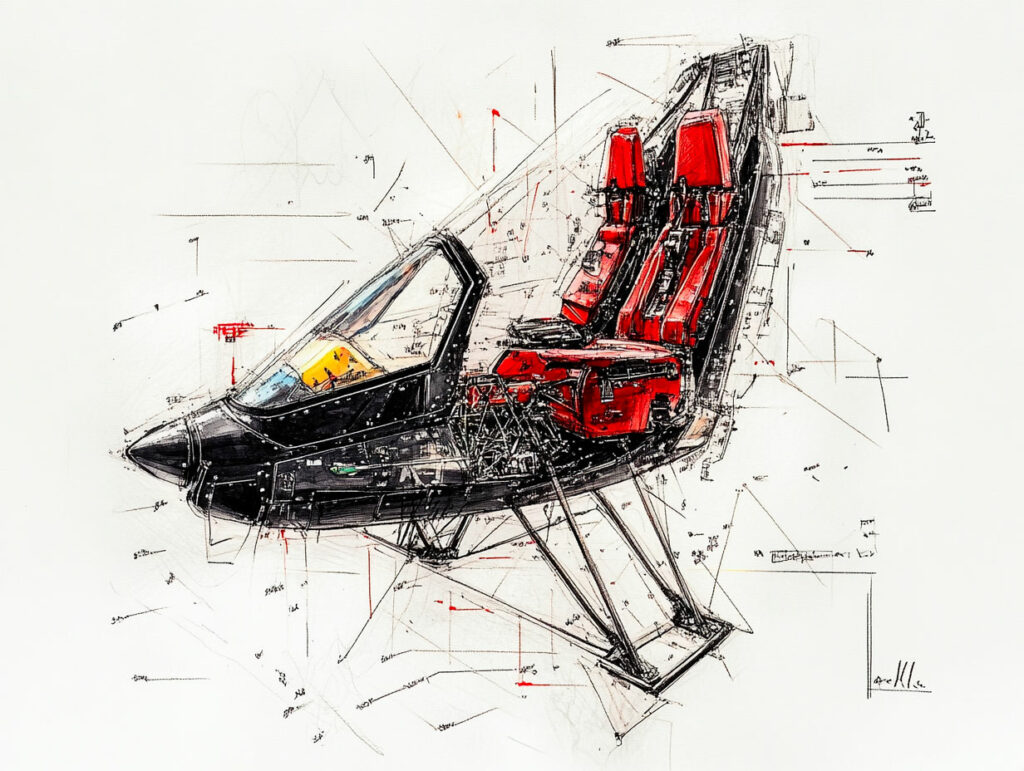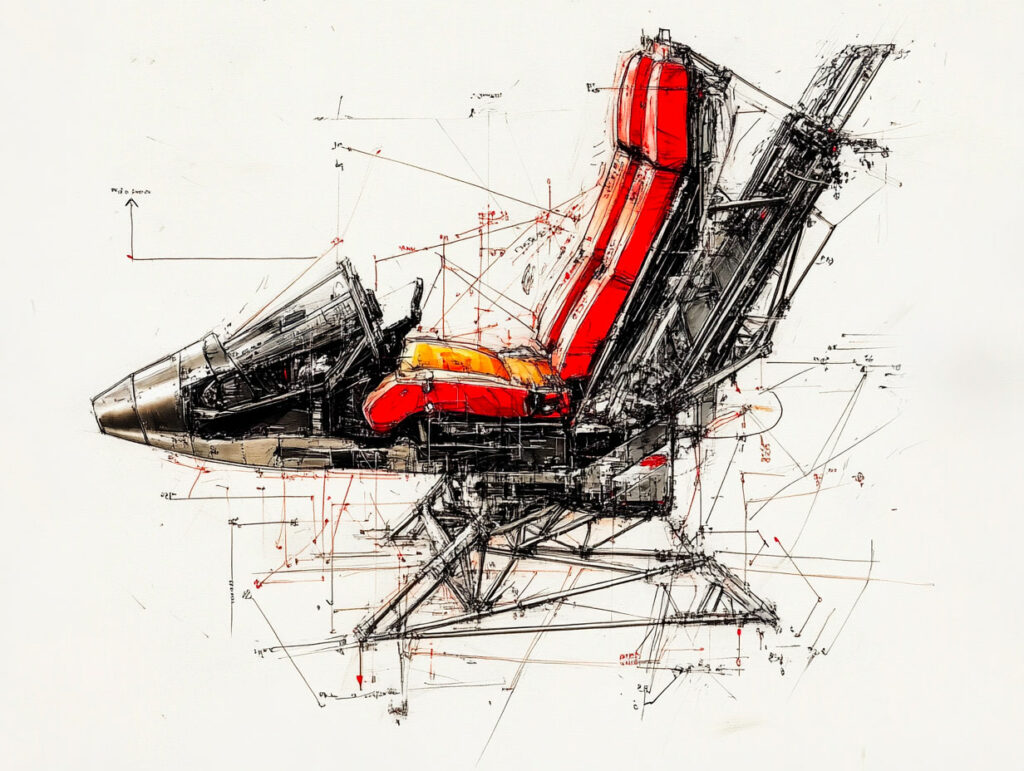
What happens when a fighter pilot ejects from his aircraft? The technical stages and the human and economic consequences explained.
When a fighter pilot ejects, precise and complex processes take place in a matter of seconds to ensure his survival. This process, although planned, has major human and technical consequences.
When a fighter pilot ejects, the safety and precision of the ejection systems are paramount. The ejection seat is designed to be fast and efficient. Ejection is often necessary during serious breakdowns or combat situations. However, it entails physical risks for the pilot and significant economic costs.

How ejection seats work: technical aspects
Modern ejection seats, such as those made by Martin-Baker, use complex pyrotechnic propulsion systems combined with rocket motors. This type of seat ensures fast, efficient extraction, essential in emergency situations. On average, complete ejection, from lever release to parachute opening, takes around 2.5 seconds.
The initial phase of ejection begins with the detonation of a pyrotechnic cartridge, which propels the seat out of the cockpit at a speed of 15 to 20 m/s. The pilot is projected upwards by means of guide rails, limiting the risk of deviation. Sophisticated sensors analyze aircraft speed, altitude and other parameters in real time, automatically triggering parachute opening in optimum conditions. These sensors make it possible to choose between delayed deployment (for high-altitude ejections) and immediate deployment (for ejections close to the ground).
Models like the ACES II, found on aircraft such as the F-16 and F-15, use auxiliary rocket motors to guarantee separation at high speeds of up to 1,200 km/h. This capability is crucial for pilots operating at varying altitudes and speeds. The cost of manufacturing and maintaining these specialized seats can reach €200,000** per unit, a necessary investment to ensure the pilot’s survival.
Physical consequences for the pilot
Ejecting from an aircraft is one of the most physically demanding experiences a pilot can have. During initial propulsion, the pilot is subjected to a force of 20 G or more, a pressure well beyond normal human physiological tolerances. The extreme force can cause microtrauma and fractures. The lumbar and cervical vertebrae are particularly vulnerable to injury, as are the pelvic joints.
Consequences can include internal haematomas, muscle tears and cranial injuries. Statistics show that 30% of ejection victims have physical residues requiring ongoing treatment. Recent advances in seat design include the addition of pre-tensioning harnesses and adaptive cushions, reducing the impact on the spine and pelvis.
Post-ejection recovery methods involve intensive care and a rehabilitation program including regular assessments to detect any lesions not initially apparent. The use of virtual reality for therapy and simulation exercises helps pilots recover more quickly.
The economic and logistical impact of ejection
Every ejection entails substantial costs for the armed forces. The loss of a military aircraft, whether a multi-role fighter like the Dassault Rafale or an F-35 Lightning II, represents a lost investment of 50 to 100 million euros. In addition to this loss, ancillary costs include the deployment of rescue personnel, medical teams and transport logistics.
Search and rescue operations often involve helicopters and fixed-wing aircraft. These missions cost an average of €10,000 per hour and can last up to 24 hours, depending on weather conditions and the position of the downed aircraft. The preparation and refuelling of the teams involved add to these costs.
What’s more, caring for the pilot on his return involves in-depth medical examinations and often extensive rehabilitation, with costs that can run into ten thousands of euros. The injuries sustained can also impact on the pilot’s availability for future missions, sometimes necessitating his temporary replacement.

Safety measures and training
Preparing pilots for ejection includes specialized exercises. Each pilot must undergo ejection seat simulations at a training center, including centrifuge tests to simulate the effects of G forces. These sessions enable pilots to familiarize themselves with the body tension required to minimize injuries.
Pool training teaches pilots how to manage water landings and how to exit the harness quickly once in the water. These exercises are essential to prepare pilots for ejection situations over sea areas, where recovery may take longer. Pilots practice staying calm underwater, orienting their parachute to prevent it from closing on them, and using buoyancy devices. This preparation increases their chances of survival and autonomy until rescue arrives.
War Wings Daily is an independant magazine.